Adventure in the Little Belts
We’re keeping a secret in Central Montana. While Glacier and Yellowstone receive the accolades, the Little Belt Mountains are the diverse and wild playground less than an hour from Great Falls.
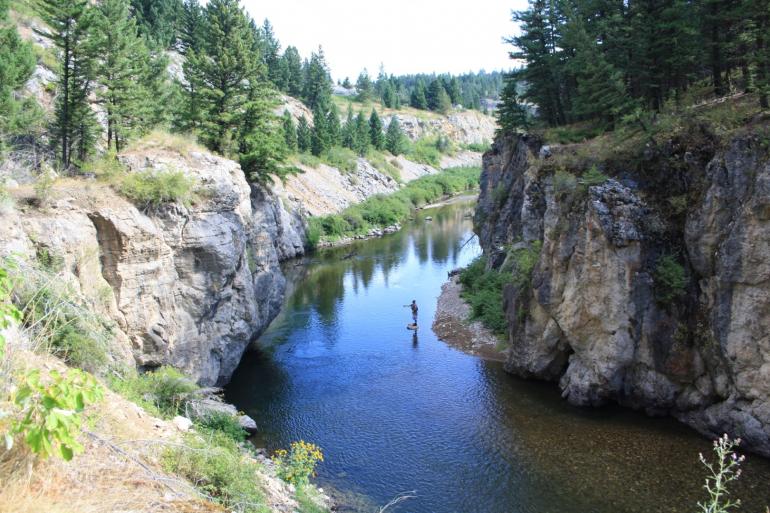
Stretching from Armington Junction along U.S. 89, the Kings Hill National Scenic Byway, 74 miles to White Sulphur Springs, the Little Belts are one of Montana’s often overlooked mountain ranges. The renowned Smith River runs along the western edge of the Little Belts, and the phenomenal Belt Creek fishery is to the north. 9,000+ foot peaks surrounded this untamed area that’s home to countless elk, moose, a smattering of wolverines, black bears, mountain lions, and the rumored grizzly. For those seeking adventure or solitude, the Little Belts are the place to be.
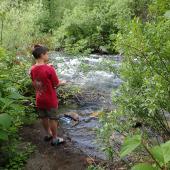
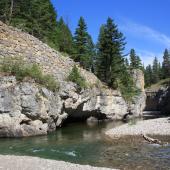
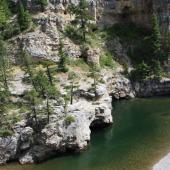
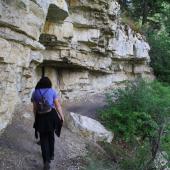
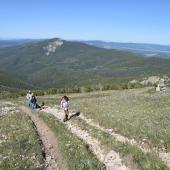
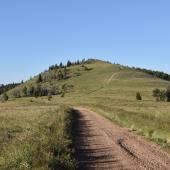
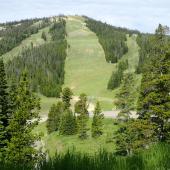
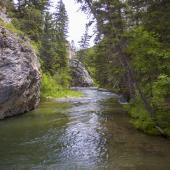
The biggest cheerleaders of the area are Charley Willett and his wife Ally, who co-authored the beautiful photo book, Into the Little Belts and Beyond. The team also created the intothelittlebelts.com website, where they answer questions and provide live webcams of the area.
“I grew up here,” says Willett. “After I left and went to college, I came to realize the Little Belts were very important. Not a lot of places in the world are so free.”
The beauty of the area is that it hasn’t changed much. “I feel one of the biggest differences is you can get cell phone coverage in Monarch,” he says. “That’s what I love about it.”
Mining origins
During the early days of mining, ore was often shipped to smelter operations in Nebraska, and sometimes as far as Swansea, Wales.
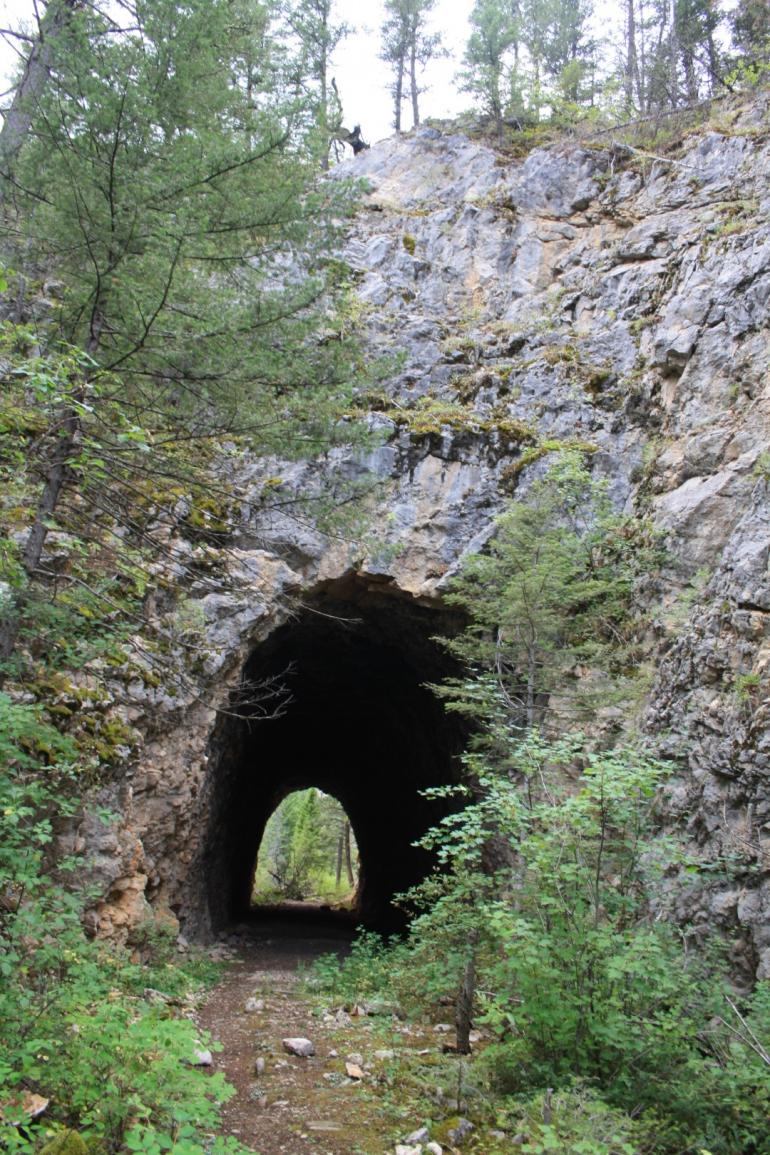
Great Falls took over the process when the Montana Central Railroad was constructed in 1889-1891 to bring the materials from Neihart to Armington. The 56-mile-long project proved challenging, requiring carefully constructed stone walls and 40 trestles spanning Belt Creek and along canyon areas in what is now the Sluice Boxes State Park. With the necessary blasting and overall dangerous conditions, several workers perished to bring these precious metals to the world.
The Allure of the Sluice Boxes
From the early days, the Sluice Boxes area was renowned for exceptional fishing and hunting. As early as 1913 a “fishing train” dropped off anglers in the morning and retrieved them at the end of the day. Although the train stopped running on November 11, 1945, and the tracks are gone, more than ever, the Sluice Boxes is a popular recreation area.
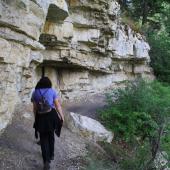
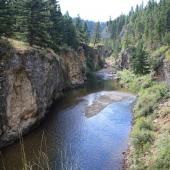
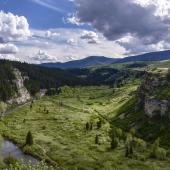
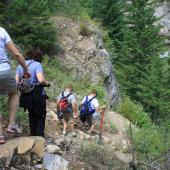
The main entrance is at the Evans-Riceville parking area, where many people start their fishing journey in this popular stream. The other option is to drive up the road to the Overlook parking area to access the upper part of the 7.34-mile trail that crosses Belt Creek 16 times.
There is an alternate route that avoids the initial cliff area along the upper trail, but the views of this spectacular area are worth walking the narrow path. There are several opportunities along the trail to visit Belt Creek, making it a perfect hike for a picnic or quick fishing trip; many people continue along the route to the 200-foot-long tunnel blasted through the rock with its soot-blackened ceiling.
This hike is unique as it combines stunning natural beauty with equally intriguing manmade features such as the dry stack stone walls and remaining trestles. Venturing roughly three miles past the tunnel, visitors can explore the ghost town of Albright, a booming limestone quarry for decades, where abandoned boilers and the remnants of the town can be seen.
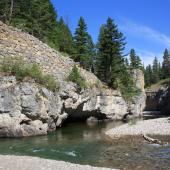
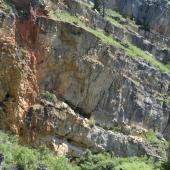
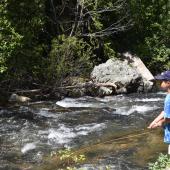
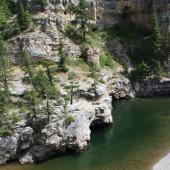
There’s only enough room for a half-dozen vehicles, but some hikers park a second vehicle at the Logging Creek Bridge to be able to shuttle back to their starting point. This is also a popular spot to launch kayaks to float these Class II and III rapids in the spring.
Drawn to Rock
While the Sluice Boxes is well known, the rest of the Little Belts provides plenty of room for people to spread out. With over 400 miles of roads, countless trails exploring remote mountains and canyons, there’s something for everyone.
“There are a lot of cool caves around here,” Willett says. Most of the caves are not well-publicized to prevent vandalism, but Lick Creek Cave near the Logging Creek Campground is a popular spot for locals. One of the best resources for cavers is the Northern Rocky Mountain Grotto, the only organization in Montana recognized by the National Speleological Society.
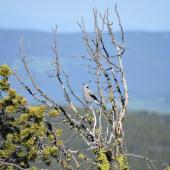
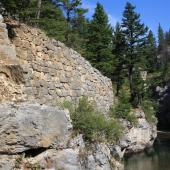
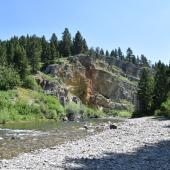
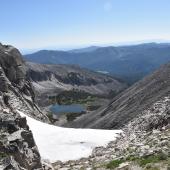
Rock climbing in the limestone, granite, and quartz formations is another sport growing in popularity. “It’s a fantastic mountain range,” says Brian Thompson, an avid outdoor climber from the Hi-Line Climbing Center in Great Falls. “What’s mostly true about the Little Belts is there are more rocks to be climbed than there are climbers to climb them.” Since there aren’t official routes, climbers often rely on word of mouth reports. “There are people out there putting up new routes,” he says. When asked for specifics, “They’ll send you a hand-drawn map.”
Trails for everyone
Hiking trails and all-terrain vehicle routes sometimes intersect in the Little Belts, but there are plenty of hiking opportunities. Be sure to bring along a topographic map and pick up a copy of the travel use map at the Belt Creek Ranger Station along Highway 89 to find trails exclusively for hiking or mountain bikes, as well as the motorized options.
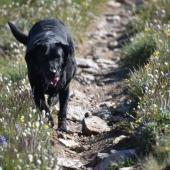
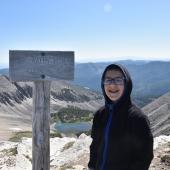
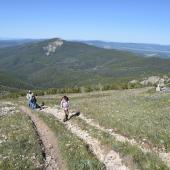
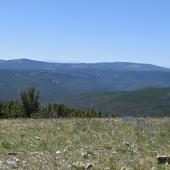
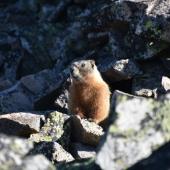
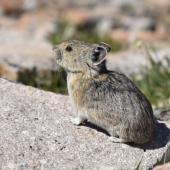
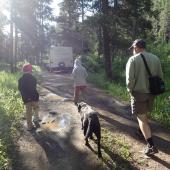
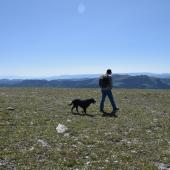
“If you’re on a 4WD trail, you’ll see a ton of people,” says Thompson. But stepping off these well-worn roads loses the crowds: “It’s easy to find solitude.”
A moderate, yet dramatic, hike or motorcycle ride is to the 9,175-foot-high summit of Big Baldy out of Neihart. In reality, the most challenging part of the trek is accessing the trailhead after a slow and bumpy traverse to the trail #416 accessible most years by mid to late July. The initial stretch starts in a beautiful, flower-filled meadow, then winds through mature aspens before finally opening up to talus slopes and switchbacks. Butterflies abound in this area. Listen for the pika and marmots in these rocky outcroppings, and keep an eye open for the occasional mountain goat.
Once on the ridge, it’s easy walking to the summit overlooking Rhoda Lake, where you can sign in to the climbers’ register, as well as view eight different mountain ranges, including the Judiths and Snowies. The threatened whitebark and limber pines jeopardized by a decades-long battle with blister rust also still grow here. Listen for the raucous calls of Clark’s nutcrackers as they uncover previous stashes and work over maturing pine cones.
For those with families looking for a leisurely walk, the Little Belts don’t disappoint. The half-mile stroll into Memorial Falls outside of Neihart is a longtime favorite. Even driving to Porphyry Peak Lookout at the top of the Big Seven Ski Run at Showdown is a terrific way to soak in the views and enjoy the high country.
Camps and Cabins
There are several Helena-Lewis and Clark National Forest campgrounds, such as Logging Creek, Jumping Creek, Moose Creek, and many others, along with dispersed camping. Reserving specific cabins is also possible via recreation.gov. These rustic structures provide a memorable experience with a few more amenities than tent camping in some very remote portions of the Little Belts.
Exceptional fishing
The popularity of fishing still holds fast in the Little Belts, and there’s equal room for fly enthusiasts to bait anglers in the reservoirs, rivers, and streams. Besides bordering the beloved Smith River, the Little Belts hold the headwaters of the Musselshell River and catch the South and Middle Forks of the Judith River. While there’s plenty of big fish in these larger waterways, the small streams are the best place to take kids where they can easily toss in a fly with great success.
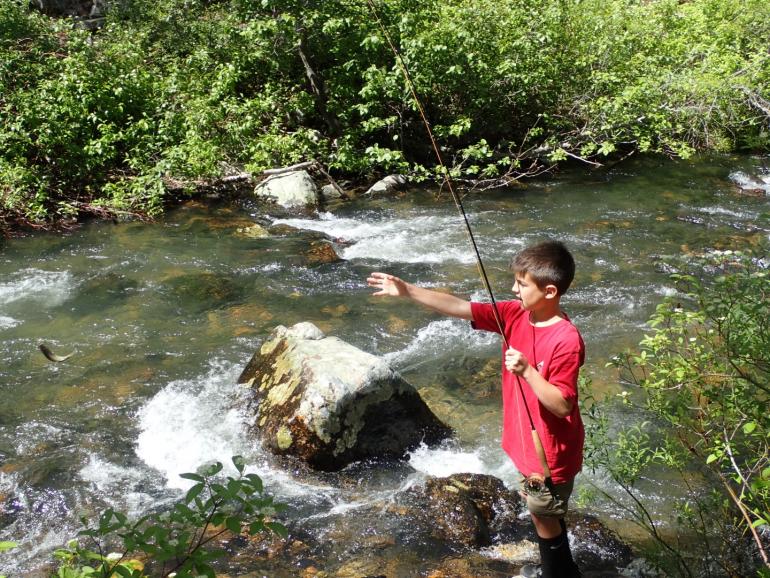
Enjoy fishing for cutthroat and rainbow trout where Belt Creek runs from Monarch and Neihart. Brook trout thrive in the Dry Fork of Belt Creek up the Hughesville Road, as well as Dry Wolf Creek. Sheep Creek is outstanding for all three. Newlan and Sutherlin Reservoir, which are both closer to White Sulphur Springs, boast several species of trout, along with burbot and Kokanee salmon.
Wrapping Up the Day With a Soak
Locals consider the hot springs at the Spa Hot Springs Motel in White Sulphur Springs to be the ultimate way to relax after enjoying the Little Belts. The springs boast three pools of varying temperatures, including the super-steamy indoor soak. This motel is an excellent place for home base, although many make it an afternoon destination just to soak.
Bring your sense of adventure, be prepared for anything, and make the most of this truly remarkable mountain oasis.
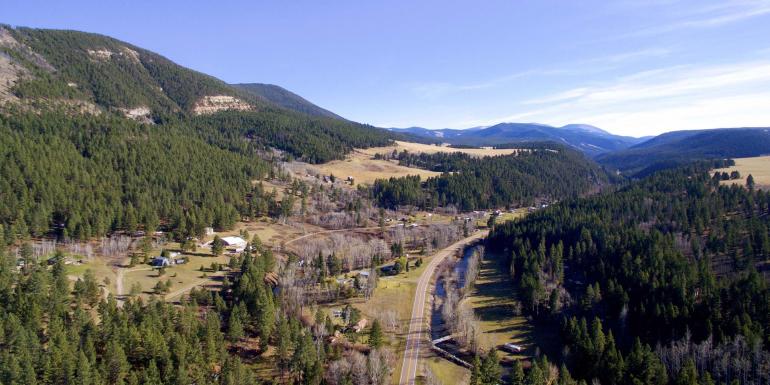
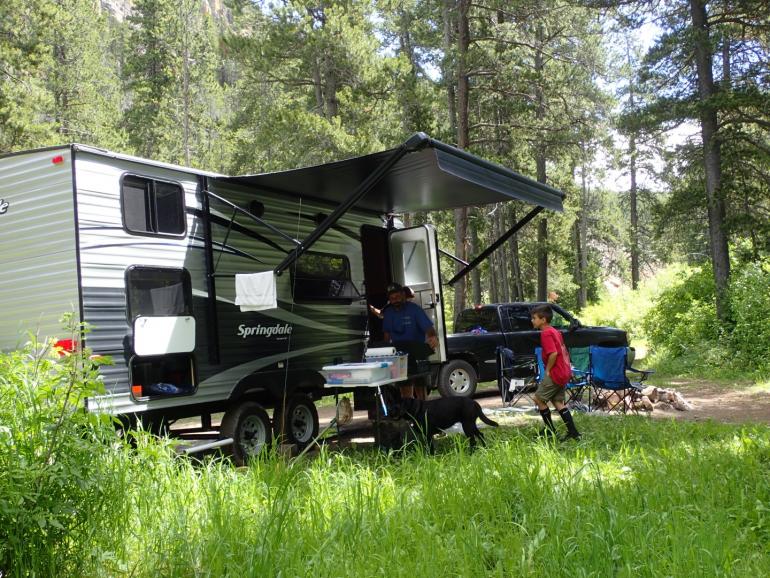
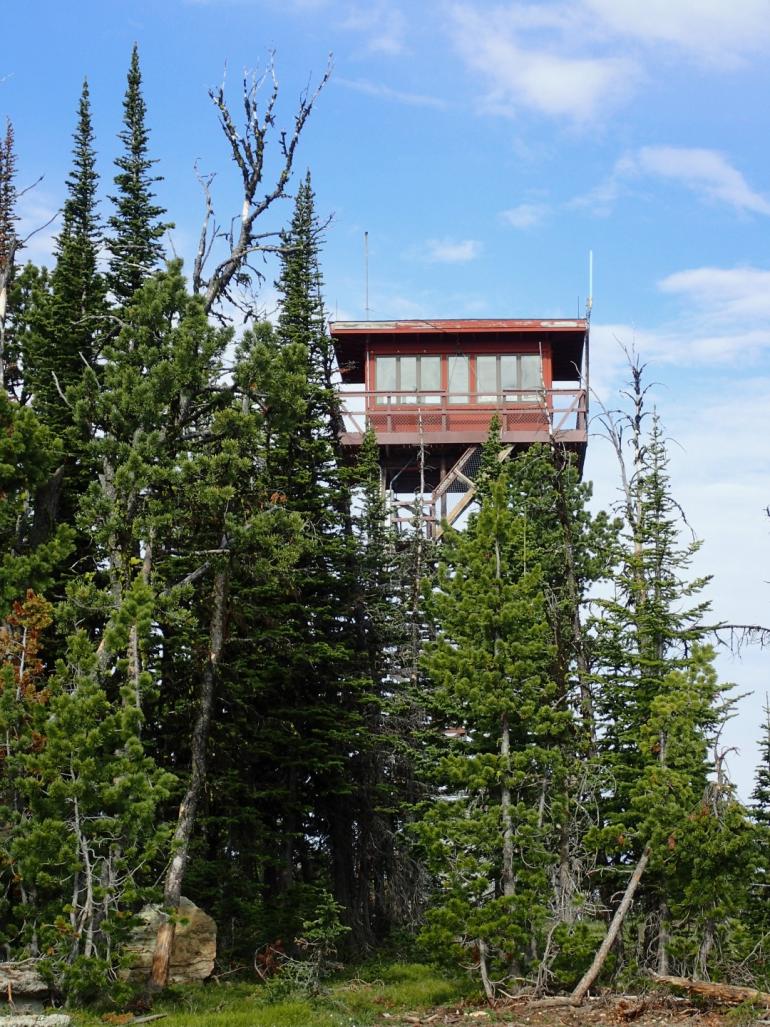
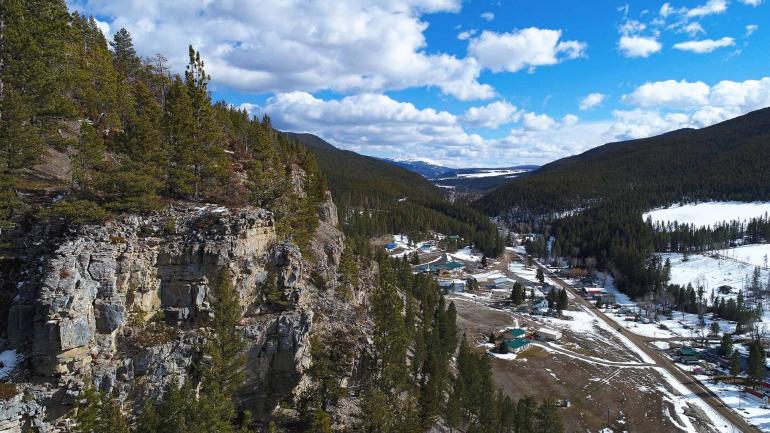
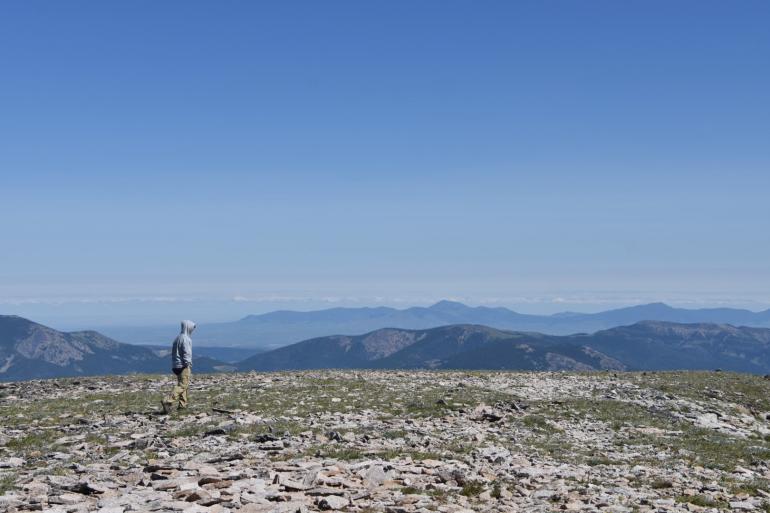
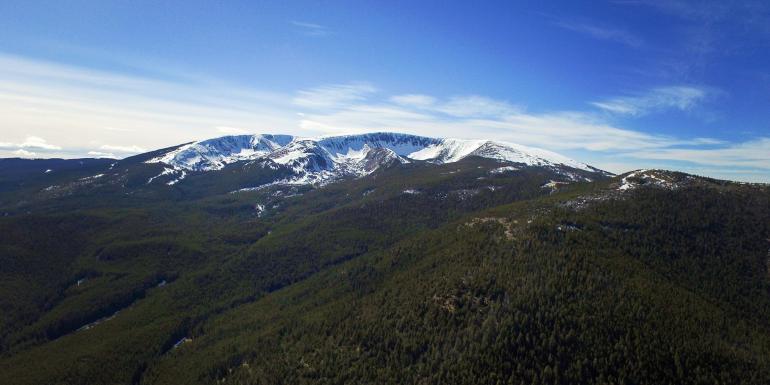
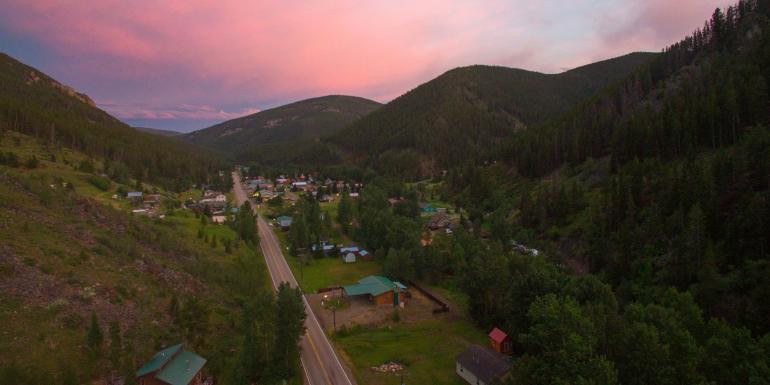

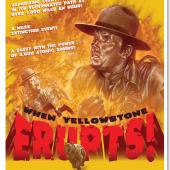
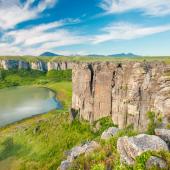

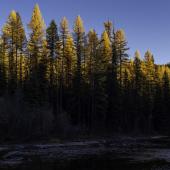
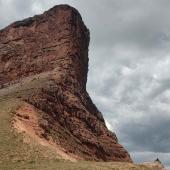

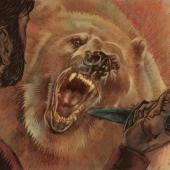


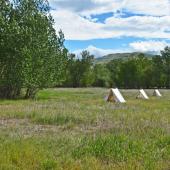
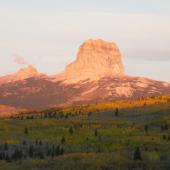
- Reply
Permalink